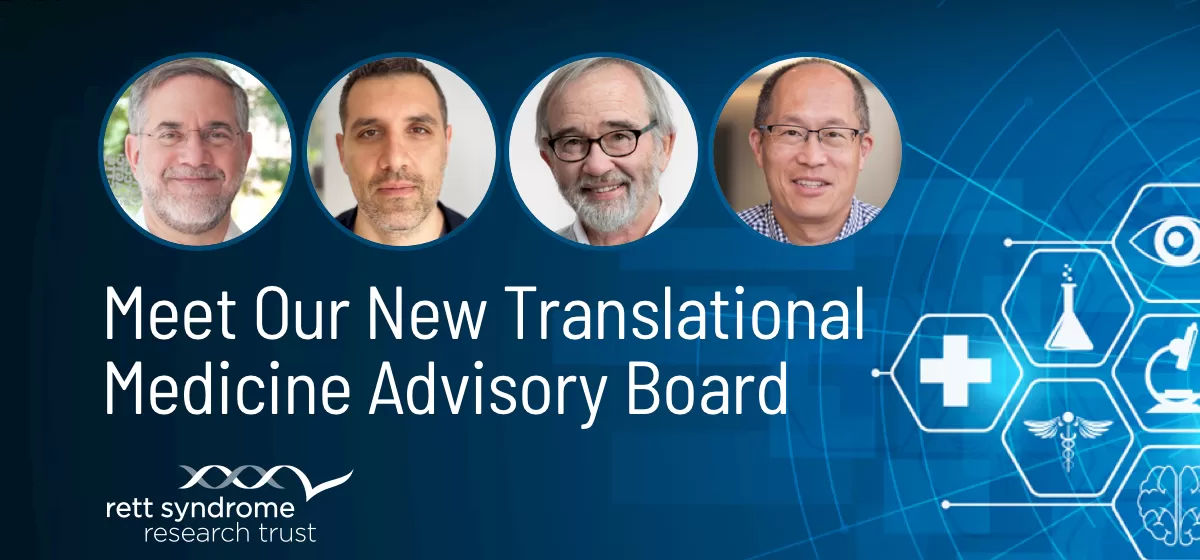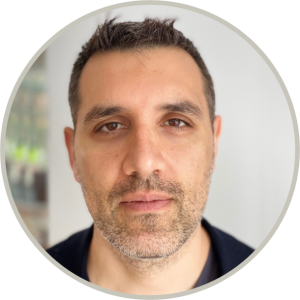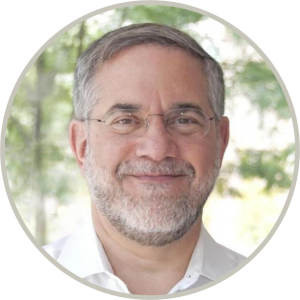In their own words - members of RSRT’s newly formed Translational Medicine Advisory Board share their reasons for optimism

Rett Syndrome is considered a rare disease; yet rare diseases, as a whole, are not rare—they affect more than 300 million people world-wide. Most, like Rett Syndrome, are caused by a small change in a person’s DNA that affects the functioning of a single gene. But that small change is enough to cause a major disruption, and therefore make life very difficult for people with that disorder.
Every parent who has a child with Rett Syndrome is hoping for a cure, and Rett parents have been waiting for breakthroughs for a long time as they watch their children suffer from a host of debilitating issues that prevent them from living a normal life.
Today, however, there is good reason for true optimism, according to four internationally recognized leaders in biomedical research and patient care, all of whom are members of the recently established Rett Syndrome Research Trust’s Translational Medicine Advisory Board.
These experts know first-hand the challenges of developing new therapies. Yet they all see significant progress toward effective therapies for Rett Syndrome due to technological advances.
So, here are the thoughts of these esteemed medical scientists, all of whom have broad academic and industry experience and are actively working on translating basic science advances into patient care.

Paul Wang, M.D.,
Simons Foundation’s Deputy Director for Clinical Research
Dr. Wang, who is a former Vice President of Autism Speaks, is a developmental-behavioral pediatrician who has cared for children with autism and associated genetic diagnosis, led a research lab, and designed and directed some of the largest studies of treatments for autism and Fragile X syndrome.
The basic research that has been done and is being done on Rett Syndrome is foundational. Many fascinating therapeutic approaches have come out of this research. Gene-targeted therapies can take a lot of different forms, but ultimately, they will need to be proven in clinical studies. We will need to look at exactly which symptoms these treatments might alleviate and determine how to measure the hoped-for improvements in those symptoms.
It will be key to have assessments that can tell us objectively whether someone is improving. My motivation in joining the Translational Medicine Advisory Board is to help in figuring out how to design the trials and how to measure improvement. I think that there is real hope that a safe and effective treatment will emerge in the next few years.
What, in particular, would you like families with children who have Rett Syndrome to know?
In the last few years, there have been a few examples of great success with genetic therapies for other conditions. The approaches used in those conditions, as well as other new approaches, are being worked on for Rett syndrome by both academia and industry. I hope that families will start to think about participating in the future clinical trials for Rett syndrome.
I’d like families to know that the Rett Syndrome Research Trust has great scientific expertise and staff, board members and volunteers who bring the first-hand experience, commitment and passion to the effort. They bring the incredibly valuable family perspective to the table. Families should know they are represented by other parents working directly as part of this effort.

Paul Nioi, Ph.D.,
Vice President, Discovery and Translational Research at Alnylam
Dr. Nioi has been a research leader in the biotech and pharmaceutical industry for two decades. At Alnylam, he leads both human genetic and translational research studies. He also has a son with Fragile X Syndrome.
Being in research in the pharma and biotech industry for almost 20 years, you gain a lot of knowledge, not just in what makes a successful medicine but also the opposite of that, the pitfalls in drug development. I’m happy to share that knowledge as a member of the Translational Medicine Advisory Board, and help navigate challenges in the development of therapies for Rett Syndrome.
Also, having a son with Fragile X syndrome has opened my eyes to the world that parents of Rett Syndrome children live in. Such rare disorders have a massive impact on a family. Being able to help progress the science is something I care deeply about.
Reason for Optimism
The progress in genetic therapies and technologies in recent years has been amazing. It’s not unreasonable to think there will be therapies that have a big impact.
We know exactly what’s causing the disease. Rett is caused alterations in a single gene, MECP2. Sometimes that change is in a single nucleotide base, one out of three billion places in the human genome.
How do we fix that? What I think is really exciting is the idea that we could go in and replace that gene with a correct copy to restore the function of that gene and possibly cure the disorder.
That sounds like science fiction—but it’s actually the world in which we currently live. There are some fantastic examples of gene therapy drugs already in use, such as Zolgensma for Spinal Muscular Atrophy. It has to be delivered to the spinal cord. The technology of how to get it to the central nervous system and deliver it to the right cells—we now know how to do that. So, the question is can we do that for Rett Syndrome? We have the pieces in place and need to mobilize the forces to do that.
There has been wonderful work in mice that shows if you create a mouse model of Rett Syndrome and restore the function of the gene, you make the mice normal again. The brain is formed correctly, and all of the pieces are in place. It gives me a lot of hope that if you insert the correct copy of the gene, there’s a really good chance that we could have a functional cure for the disease.
That’s why I get so excited. We know what’s causing the disorder. We have the tools and the technology, and it gives me a lot of hope that if we provide a correct copy of the gene, we could have a huge impact on these patients, enabling them to reestablish the skills they lost. And if the disorder can be identified at birth, you might be able to deliver the therapy and hopefully those kids would develop in a normal way.
A couple of companies are working on ways to replace the gene. And we would need to know how to measure the impact in a clinical study. What do you consider for the outcome as an indication that the drug is working? Functional measures need to be specific for Rett Syndrome to know whether the drug works.
What would you like families to know?
I’d like families to realize that there’s realistic hope that there are therapies on the horizon. The best example is gene replacement but that’s not the only one. There are five or six different approaches that are being considered by a variety of biotechnology and pharma companies. There’s a lot of activity. I’m very confident that one or more of these therapies will work in the next five years or so.
The engagement of families with children who have Rett Syndrome will be critically important to the success of these therapies in clinical trials. We will need their input to know what an improvement would look like.

Philip Reilly, M.D., J.D.,
Is a Venture Partner, Third Rock Ventures
Dr. Reilly, a specialist in internal medicine and clinical genetics, has spent decades working with patients who have rare genetic diseases. At Third Rock, he creates and builds companies that are working to develop breakthrough therapies.
It was natural for me to get involved in the Translational Medicine Advisory Board because Rett Syndrome is greatly in need of a therapy. And I have great affection for, and belief in Monica Coenraads, who has done extraordinary work in the last 20 years in bringing Rett Syndrome into much greater awareness and driving the research forward.
Since Rett Syndrome is caused by a problem in a single gene, we can have a lot more focus in our research compared to other disorders like asthma, or cancer.
Technological Optimism
I’m overwhelmed and awed by the technological progress, such as DNA sequencing and DNA editing—there are so many new technologies that can be harnessed to better understand these rare diseases that there’s cause for “technological optimism.” With so many bright scientists, I believe we will find interventions that can help these children.
What should families know?
As a doctor who has spent his career in working on ways to help children with rare genetic diseases, I know that parents play a crucially important role –we can learn from them on how to develop clinical trials that identify changes that the parents would know better than the doctors. They are partners with the scientists and companies. They can teach us a lot and make us refine and better understand the subtilties of the disorder.

Steven E. Hyman, M.D.
Is a Core Institute Member and Director of the Stanley Center for Psychiatric Research at the Broad Institute of Harvard and MIT
The Center conducts global, large-scale genetics studies and neurobiological investigations to identify biomarkers and promising therapeutic targets. He is also a Harvard University Distinguished Service Professor of Stem Cell and Regenerative Biology. Dr. Hyman is the former Harvard University Provost and past director of the National Institute of Mental Health, where he led funding for neuroscience and emerging genomic technologies.
The timing of the appointment of this Advisory Board reflects the state of the science. We’ve known far longer about the mutations in MECP2 that lead to Rett Syndrome than we’ve had ways of treating children who’ve developed the disorder. What’s happened in the last five years, however, are important advances in treating genetic disease. As with any truly novel approach to treatment, the gene therapies currently in late stage development or clinical use need close observation and iterative improvement.
We spent our first meeting prioritizing a list of promising approaches to the treatment of Rett Syndrome prepared by Monica Coenraads and colleagues. While much remains to be accomplished, this prioritized list is exciting; we all see actionable paths forward.
We recognize the needs of children with Rett Syndrome and their families today but must ensure that therapies will be safe and truly effective. The necessary steps to achieve these goals include laboratory development of the chosen therapy, developing efficient ways to optimize it for different mutations associated with Rett Syndrome, selecting an effective way to deliver the therapy into the nervous system—to the right cells at the right concentrations—and then, with a coalition that includes partners in industry, design and conduct clinical trials that have measurable, convincing endpoints. This is a significant ‘to do’ list, but each step is now precedented; for the first time in history there is a ‘playbook’.
What would you say about the role of families in these efforts?
It is always important that families are real partners in such efforts. For example, families should have a role in the clinical trials, not only for purposes of recruitment, but also design. In my experience, families are critical partners in the selection of meaningful endpoints. Assuming success, families also must have a voice in ensuring access to effective therapies.
In my long career, I’ve interacted with many parent organizations, and see the Rett Syndrome Research Trust as well-run and very effectively focused on advancing the science toward therapeutics. I have had the privilege of knowing Monica Coenraads (RSRT’s Chief Executive Officer), from the time I was director of NIMH in the 1990’s and have known Dr. Randy Carpenter (RSRT’s Chief Medical Officer) almost as long. I am pleased to serve on the Translational Medicine Advisory Board not only because of the great unmet clinical need, but also because I am confident that our advice will be put to good use.
The Rett Syndrome Research Trust established its Translational Medicine Advisory Board to provide new strategic direction for its CURE 360 agenda and open new avenues of innovative research that can be applied to Rett Syndrome. CURE 360 is an initiative that focuses on six approaches that attack the disorder at its genetic core.
“The Translational Medicine Advisory Board will help us focus our resources on the most promising areas of research, facilitate introductions to scientists and biopharma companies working on impactful new therapeutic approaches and technologies, and bring us closer to a cure,” said Monica Coenraads, CEO and founder of the Rett Syndrome Research Trust. “They, along with the generous support of Rett families, is helping to make this progress a reality,”
“We are very grateful that these distinguished leaders have joined us. They share our passion and urgency and are dedicated to working with us to advance the development of therapeutics targeting the root cause of Rett Syndrome,” said Dr. Randy Carpenter, Chief Medical Officer of the Rett Syndrome Research Trust.


